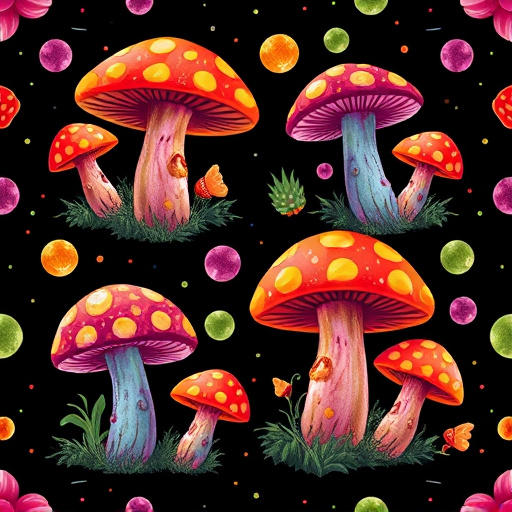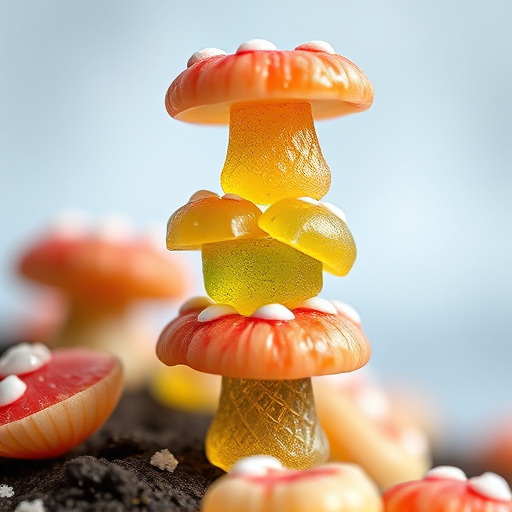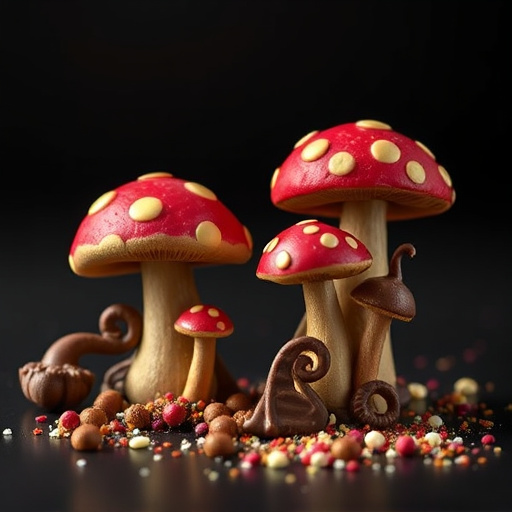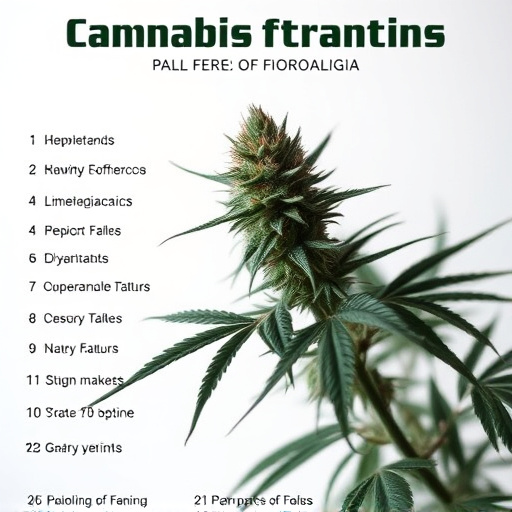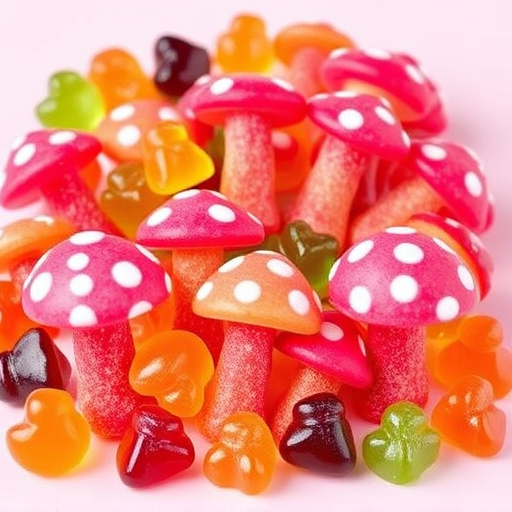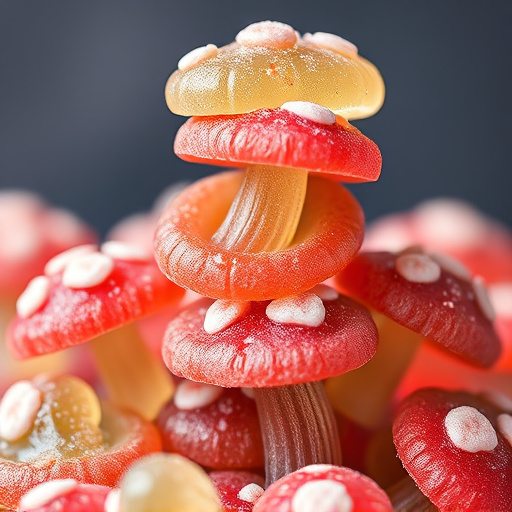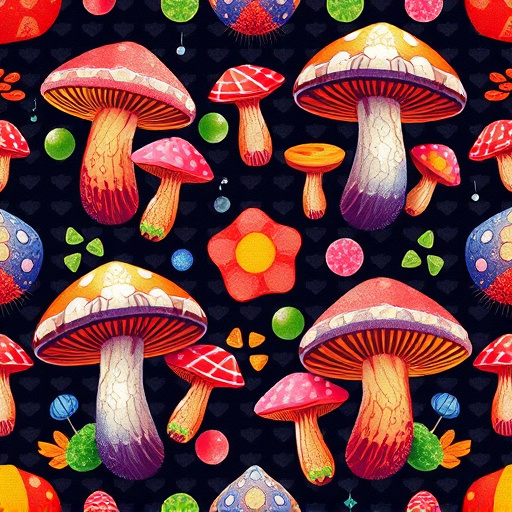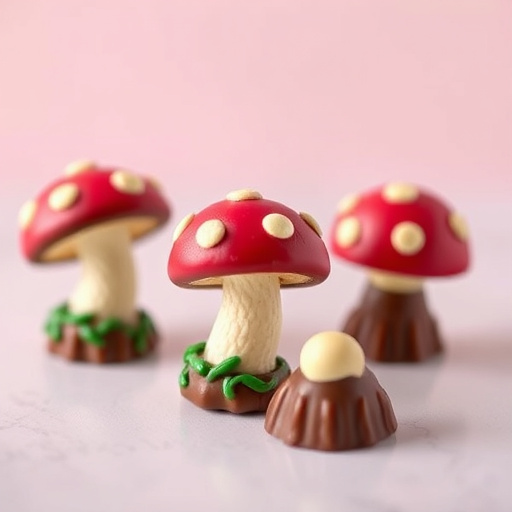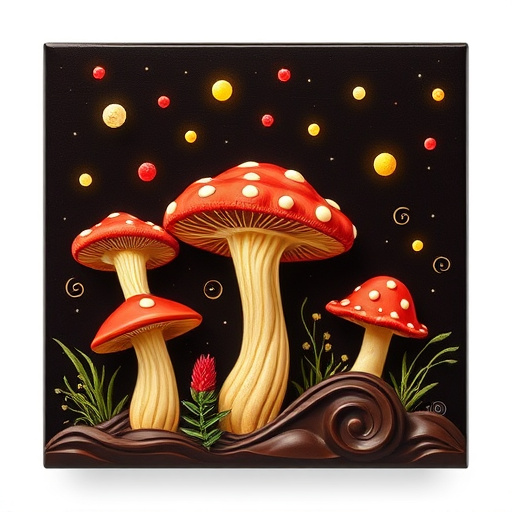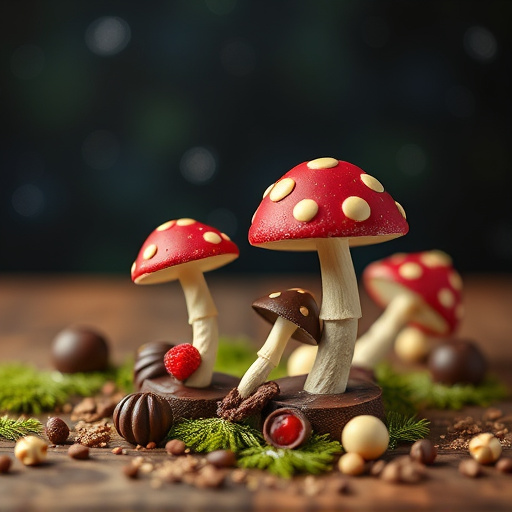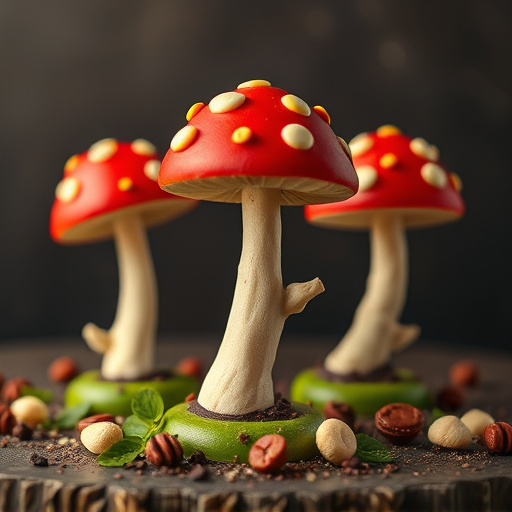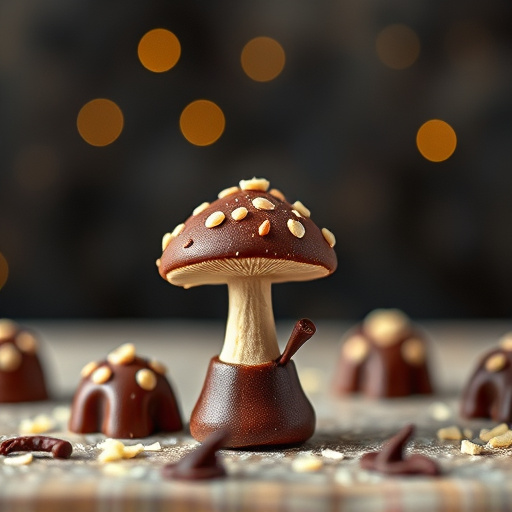The Science Behind Magic Mushroom Chocolates reveals how psilocybin and psilocin, compounds found in Psilocybin mushrooms, interact with brain serotonin receptors to alter perceptions. This interaction offers therapeutic benefits for mental health, creativity enhancement, and improved mood. Incorporating these compounds into chocolate provides a novel, discreet way to improve mental clarity, sparking interest within the wellness industry for their potential consciousness-exploring and therapeutic applications.
“Uncover the surprising world of Magic Mushroom Chocolates and their claimed ability to enhance focus. This insightful article delves into the science behind these unique treats, exploring the chemical composition of magic mushrooms, specifically psilocybin and psilocin. We examine scientific studies revealing their potential impact on cognitive function and focus. Additionally, discover the emerging therapeutic applications of magic mushroom chocolates while learning essential safety considerations. By the end, you’ll have a comprehensive understanding of this intriguing topic.”
- The Chemical Composition of Magic Mushrooms
- – Exploring the key compounds: psilocybin and psilocin
- – How these compounds interact with the human brain
The Chemical Composition of Magic Mushrooms

Magic mushrooms, scientifically known as Psilocybin mushrooms, contain unique chemical compounds that have sparked both curiosity and controversy for decades. The active ingredients responsible for their psychoactive effects are psilocin and psilocybin, which are serotonergic compounds. When consumed, these chemicals interact with our bodies’ natural serotonin receptors, leading to altered perceptions and changes in mood, thought patterns, and sensory experiences.
The science behind magic mushroom chocolates involves the intricate relationship between these chemical compounds and the brain. Research suggests that psilocin can enhance creativity, improve mood, and even offer therapeutic benefits for certain mental health conditions. When incorporated into chocolate form, the combination can provide a unique sensory experience, blending the soothing effects of dark chocolate with the mystical properties of magic mushrooms. This innovative approach to consuming psilocybin compounds has sparked interest in the wellness industry, as it offers an alternative way to explore consciousness and potentially harness the benefits of this ancient natural substance in a modern context.
– Exploring the key compounds: psilocybin and psilocin

The Science Behind Magic Mushroom Chocolates delves into the key compounds responsible for their effects: psilocybin and psilocin. Psilocybin, a psychotropic compound, is known for its ability to alter perception and induce altered states of consciousness. When consumed, it converts into psilocin, which interacts with serotonin receptors in the brain, leading to various sensory and emotional changes. Research suggests that these compounds can stimulate creativity, enhance focus, and promote deep reflection, making them a subject of interest for both scientific study and alternative wellness practices.
In terms of focus, studies have shown that controlled doses of psilocybin can improve cognitive functions, including attention span and information processing. This is particularly relevant in the context of modern lifestyles where mental fatigue and concentration issues are prevalent. Magic mushroom chocolates, as a novel delivery method, offer a discreet and potentially palatable way to explore these compounds’ benefits for focus and mental clarity.
– How these compounds interact with the human brain

The Science Behind Magic Mushroom Chocolates
Magic mushroom chocolates, or psychotropic chocolate treats infused with psilocybin, offer more than just a delicious experience. The compounds found in magic mushrooms interact with the human brain by binding to specific receptors in the neural system, primarily serotonin receptors. This interaction triggers a cascade of effects, leading to altered perceptions, enhanced creativity, and increased focus. Psilocybin has been shown to stimulate areas of the brain associated with attention and cognitive function, making it a subject of interest for researchers exploring novel ways to improve mental clarity and concentration.
These compounds also influence neuroplasticity, the brain’s ability to form new neural connections. This property may contribute to the reported experiences of heightened creativity and problem-solving abilities after consuming magic mushroom chocolates. Moreover, studies suggest that psilocybin can modulate emotional responses by affecting the limbic system, which is responsible for processing emotions and memory. Understanding these complex interactions provides a foundation for exploring the potential therapeutic benefits of magic mushroom chocolates in controlled settings, offering new paths to enhance focus and cognitive performance.
The science behind magic mushroom chocolates is a fascinating exploration of the brain’s potential. Psilocybin and psilocin, the key compounds found in these mushrooms, have shown promise in enhancing focus and cognitive functions when consumed responsibly. Understanding their interaction with the human brain opens up new avenues for research into mental health and performance optimization. However, it’s crucial to approach this topic with caution and further study, as the effects can vary greatly among individuals. The future of magic mushroom-inspired treats lies in their potential therapeutic benefits, always under professional guidance.
